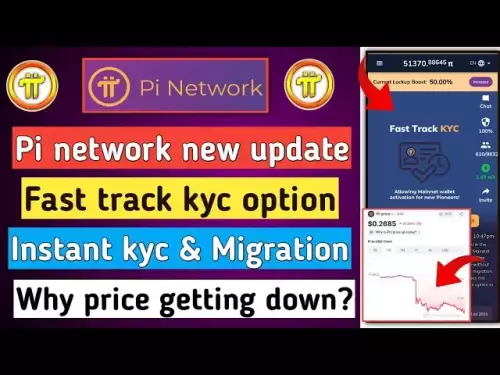-
 bitcoin
bitcoin $109667.069529 USD
-3.03% -
 ethereum
ethereum $3936.685804 USD
-4.07% -
 tether
tether $1.000493 USD
0.01% -
 xrp
xrp $2.771823 USD
-4.74% -
 bnb
bnb $957.805027 USD
-5.34% -
 solana
solana $196.735100 USD
-6.68% -
 usd-coin
usd-coin $0.999727 USD
-0.01% -
 dogecoin
dogecoin $0.227355 USD
-5.12% -
 tron
tron $0.335205 USD
-0.81% -
 cardano
cardano $0.779256 USD
-3.59% -
 ethena-usde
ethena-usde $0.999900 USD
-0.06% -
 hyperliquid
hyperliquid $42.492095 USD
-6.61% -
 chainlink
chainlink $20.501853 USD
-4.34% -
 avalanche
avalanche $28.952606 USD
-11.21% -
 stellar
stellar $0.356038 USD
-3.93%
Is Bitcoin contract compound interest
In Bitcoin contracts, compound interest can be realized through lending and borrowing platforms, interest-earning accounts, options strategies, or perpetual futures contracts with funding.
Nov 09, 2024 at 05:06 pm

The concept of "compound interest" in a Bitcoin contract implies that the interest earned on the underlying asset (Bitcoin) is reinvested, resulting in potential exponential growth of the initial investment over time. This feature is not directly inherent in Bitcoin itself but can be achieved through financial instruments or strategies utilizing Bitcoin as the underlying asset.
To understand compound interest in the context of Bitcoin contracts, let's explore the various methods through which it can be realized:
1. Bitcoin Lending and Borrowing Platforms:- Many crypto exchanges and decentralized finance (DeFi) platforms offer Bitcoin lending and borrowing services.
- Lenders deposit their Bitcoin into lending pools, earning interest on their Bitcoin holdings.
- Borrowers can take out loans using Bitcoin as collateral, paying interest on the borrowed amount.
- The interest earned by lenders can be automatically reinvested into the lending pool, compounding over time.
Example:Let's assume you lend 1 BTC at an annual interest rate of 5%. After year 1, you will have earned 0.05 BTC. If you reinvest this earned interest back into the lending pool, in year 2, you will earn interest not only on your original 1 BTC but also on the accumulated 0.05 BTC. This process continues over time, leading to exponential growth of your earnings.
2. Bitcoin Interest-Earning Accounts:- Some crypto exchanges and custodian services offer interest-earning accounts for Bitcoin.
- Account holders deposit their Bitcoin into these accounts and earn interest on their holdings.
- The interest earned can be automatically compounded, leading to potential exponential growth of the principal.
Example:Let's suppose you deposit 1 BTC into an interest-earning account offering a 4% annual interest rate. After year 1, you will have earned 0.04 BTC. If the account automatically compounds the interest, the earnings in year 2 will be calculated on not only the initial 1 BTC but also the accrued 0.04 BTC, leading to a progressively increasing interest payout.
3. Bitcoin Options Strategies:- Certain options strategies can be employed to generate compound interest-like returns using Bitcoin as the underlying asset.
- One example is selling covered calls on Bitcoin.
- In this strategy, you sell the right to another party to buy your Bitcoin at a predetermined price, receiving a premium in exchange.
- If the Bitcoin price remains below the strike price, the premium earned can be reinvested, effectively compounding your earnings.
Example:Imagine you own 1 BTC and sell a covered call with a strike price of $25,000, receiving a premium of $500. If the Bitcoin price stays below $25,000 at the expiration date, you retain your Bitcoin and earn the $500 premium. You can then reinvest this premium into another covered call, increasing your potential returns over time.
4. Bitcoin Perpetual Futures Contracts with Funding:- Perpetual futures contracts are financial instruments that allow traders to speculate on the future price of Bitcoin without having to take delivery of the underlying asset.
- They have a unique feature known as "funding," which can act as a source of compound interest.
- Depending on the market conditions, the funding rate can be either positive or negative.
- When the funding rate is positive, longs (traders who bet on the price going up) pay shorts (traders who bet on the price going down), and the opposite occurs when the funding rate is negative.
- By strategically entering and exiting positions in perpetual futures contracts, traders can take advantage of positive funding rates, effectively compounding their earnings.
Example:Suppose you go long on a Bitcoin perpetual futures contract with a positive funding rate of 0.01% per day. If you hold the position for 30 days, you will receive $30 worth of funding payments, assuming a notional value of $100,000. This can be considered as compound interest, as it represents a gain on your initial investment without having to sell the underlying Bitcoin.
Important Considerations:- Compounding interest in Bitcoin contracts can be subject to risks, including market volatility, potential defaults in lending or borrowing agreements, and platform fees.
- It's crucial to carefully evaluate the terms of the contracts and the underlying platforms to make informed investment decisions.
- Investors should also consider their own risk appetite and financial goals before engaging in any Bitcoin contract strategies involving compound interest.
Disclaimer:info@kdj.com
The information provided is not trading advice. kdj.com does not assume any responsibility for any investments made based on the information provided in this article. Cryptocurrencies are highly volatile and it is highly recommended that you invest with caution after thorough research!
If you believe that the content used on this website infringes your copyright, please contact us immediately (info@kdj.com) and we will delete it promptly.
- Swift, Ethereum, and Layer 2: Bridging Traditional Finance with Blockchain Innovation
- 2025-09-27 06:25:12
- Dubai Fund, TikTok, and US Business: A New Era?
- 2025-09-27 06:45:13
- XPL Surge After Launch Crash: From All-Time High to Recovery?
- 2025-09-27 06:45:13
- Laguna Beach, Tokenizing, and Beauty: A New Era?
- 2025-09-27 06:25:12
- Hester Peirce, NFTs, and the SEC's Crypto Future: A Shift in Tone?
- 2025-09-27 06:50:01
- Circle, Rollback, and Stablecoins: A New Era of Crypto Security?
- 2025-09-27 06:50:01
Related knowledge

How do I enable the "scalping-only" mode for Cardano (ADA) contracts?
Sep 24,2025 at 03:19am
Understanding Scalping Strategies in Crypto Derivatives1. Scalping in cryptocurrency trading refers to executing multiple short-term trades within min...
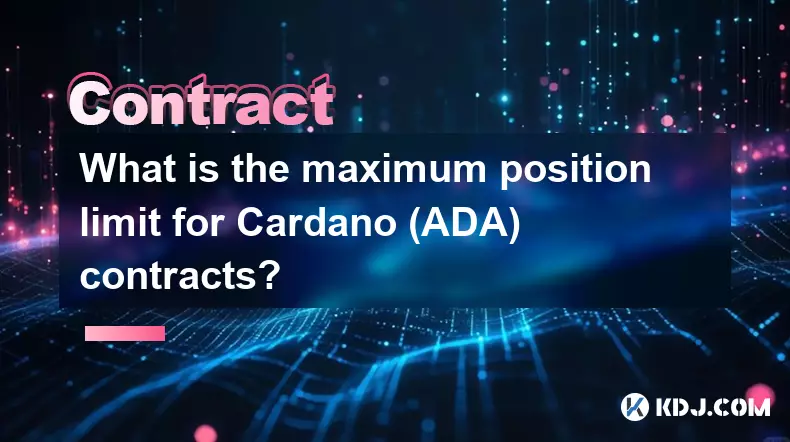
What is the maximum position limit for Cardano (ADA) contracts?
Sep 23,2025 at 11:00pm
Understanding ADA Futures and Derivatives Market Structure1. Cardano (ADA) futures contracts are offered by several major cryptocurrency derivatives e...
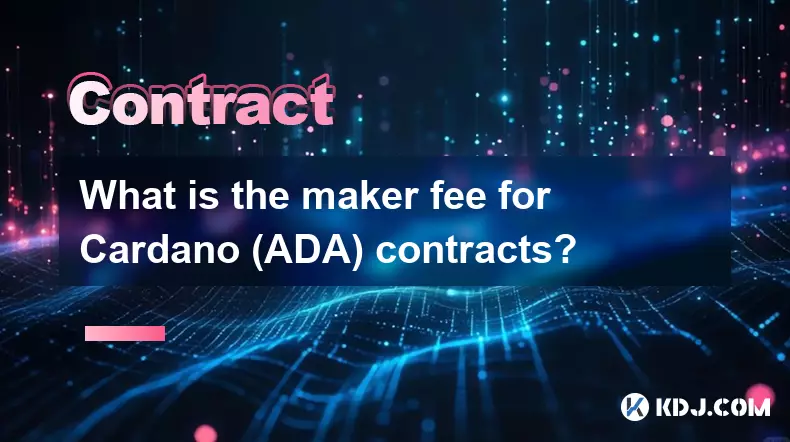
What is the maker fee for Cardano (ADA) contracts?
Sep 26,2025 at 09:01am
Understanding Maker Fees in Cardano (ADA) Contracts1. The concept of maker fees applies broadly across decentralized exchanges and smart contract plat...
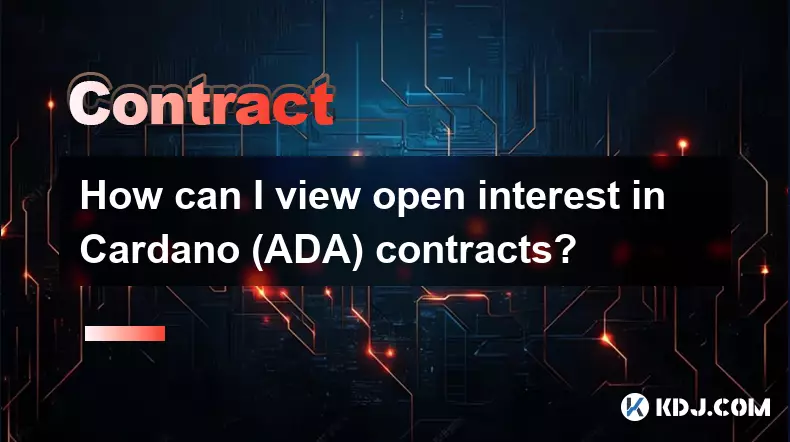
How can I view open interest in Cardano (ADA) contracts?
Sep 24,2025 at 07:36am
Understanding Open Interest in Cardano Derivatives1. Open interest refers to the total number of outstanding derivative contracts, such as futures or ...
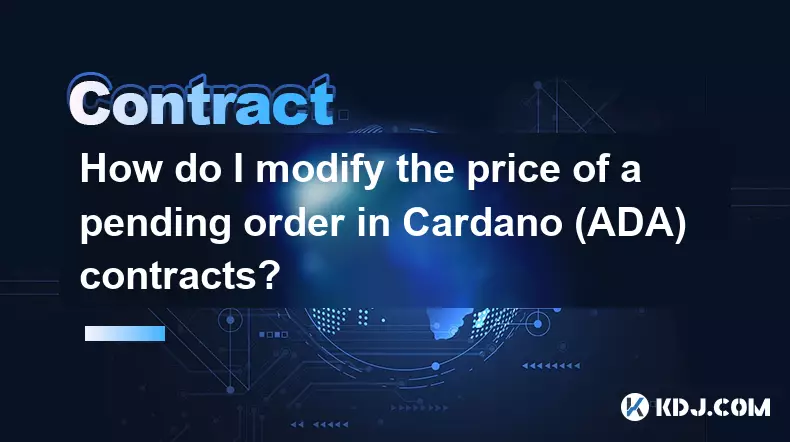
How do I modify the price of a pending order in Cardano (ADA) contracts?
Sep 27,2025 at 01:00am
Understanding Pending Orders in Cardano Smart Contracts1. Cardano operates on a proof-of-stake blockchain that supports smart contracts through its Pl...
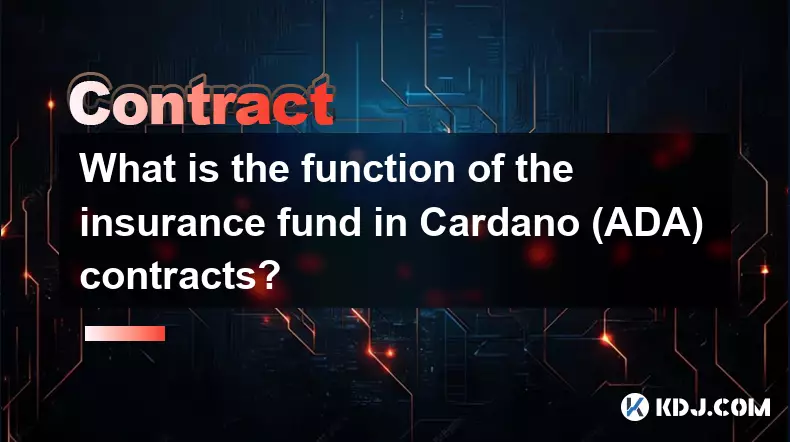
What is the function of the insurance fund in Cardano (ADA) contracts?
Sep 24,2025 at 02:18am
Understanding the Role of Insurance Funds in Cardano Smart Contracts1. The insurance fund within Cardano's ecosystem is not a native feature directly ...

How do I enable the "scalping-only" mode for Cardano (ADA) contracts?
Sep 24,2025 at 03:19am
Understanding Scalping Strategies in Crypto Derivatives1. Scalping in cryptocurrency trading refers to executing multiple short-term trades within min...

What is the maximum position limit for Cardano (ADA) contracts?
Sep 23,2025 at 11:00pm
Understanding ADA Futures and Derivatives Market Structure1. Cardano (ADA) futures contracts are offered by several major cryptocurrency derivatives e...

What is the maker fee for Cardano (ADA) contracts?
Sep 26,2025 at 09:01am
Understanding Maker Fees in Cardano (ADA) Contracts1. The concept of maker fees applies broadly across decentralized exchanges and smart contract plat...

How can I view open interest in Cardano (ADA) contracts?
Sep 24,2025 at 07:36am
Understanding Open Interest in Cardano Derivatives1. Open interest refers to the total number of outstanding derivative contracts, such as futures or ...

How do I modify the price of a pending order in Cardano (ADA) contracts?
Sep 27,2025 at 01:00am
Understanding Pending Orders in Cardano Smart Contracts1. Cardano operates on a proof-of-stake blockchain that supports smart contracts through its Pl...

What is the function of the insurance fund in Cardano (ADA) contracts?
Sep 24,2025 at 02:18am
Understanding the Role of Insurance Funds in Cardano Smart Contracts1. The insurance fund within Cardano's ecosystem is not a native feature directly ...
See all articles























